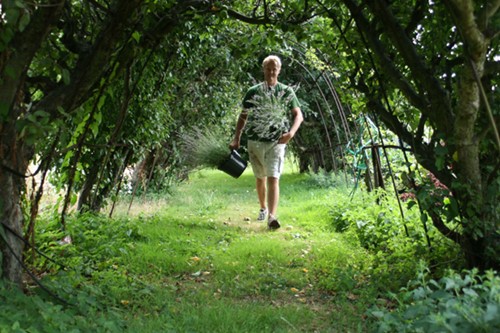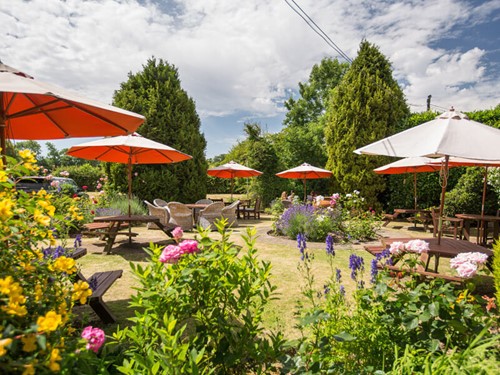Taking Care of trees
Taking Care of Trees
The minute you plant a tree, you’re committing to a lifelong relationship of watering, pruning, feeding with fertiliser and controlling pests. Do it right and you’ll get the reward of a stunning arboreal treat to admire as it grows, along with some shade in the summer, and perhaps a few flowers or juicy treats from fruit trees to enjoy along the way.
There are a wide variety of British trees or imported trees that do well in our climate. Beech, birch, ash and elm are good examples of indigenous species, as well as national symbols of apple trees, oak and chestnut. Cedar, cypress, fir and maple are non-native trees that also thrive in Great Britain.
For something a bit more exotic, you could try palms, olive trees or fig trees. If you need year-round foliage, you should choose an evergreen tree.
When choosing a tree, you should research well. Look around your area to see what is growing and ask your local garden centre for some tips – what fertiliser to use, when to prune trees, etc. If you’re looking for trees to plant in a commercial setting you can’t do any better than to ask corporate planting and landscaping services specialist, phs Greenleaf for advice. phs Greenleaf is perfectly placed to provide recommendations for the ideal trees for your surroundings, as well as carry out laborious tasks, such as mowing and weeding.
Why are trees important?
Trees aren’t just important, they’re vital to life! Through photosynthesis, all trees, British trees or not, remove carbon dioxide from our air and give us oxygen. They hold our soil together, with instances of tree removal being blamed for devasting landslides and flooding.
Strategically placed trees can also act as effective wind breaks and/or screening, not to mention their ability to provide a home and food for hundreds of different species of wildlife. It’s not just little creatures that can gain a home from trees, humans also use wood from trees in all sorts of building on different scales. In addition, thanks to their ability to absorb carbon, wood from trees is an excellent source of fuel, though it takes many years to replace.
In a commercial setting, why are trees important? Planting trees on a large scale can help to provide a beautiful and calming atmosphere, attracting visitors and customers and encouraging business.
If treated properly, trees can live for hundreds of years so, once you know which trees you want to include in your garden or grounds, it’s important to make sure you give them a good start. Just like children, the first years count and can make the difference to the future health of the tree.
With this in mind, it’s important to plant well:
- Dig a hole twice as wide and the same depth as the root ball
- Remove plastic or metal from the root ball. Natural burlap, such as hessian, can be left in place. Put the tree into the hole.
- Refill the hole with the same soil that you dug out, keeping the tree upright, watering when the hole is two-third full.
- Firm up the ground with your foot to ensure the root ball is firmly in place.
- Add mulch, but not too much. If the soil around the root ball retains too much water, the roots will rot, so lay the mulch in a circle 3 inches away from the tree trunk.
Once the trees are in-situ, don’t be tempted to use tree guards. These can cause harm to wildlife and prevent wind from strengthening the trunk. Shrubs may be planted at the tree base, rather than tree guards, to provide a little protection from the elements for the young tree.

Caring for your trees
After taking the effort to carefully plant, you need to avoid what kills trees quickly. Trees need water, nutrients and sunlight which can usually be found in natural surroundings but will need a little help with watering in times of low rainfall and periodic feeding with fertiliser. Young trees need around 25 gallons of water or 1.5 inches of rainfall a week.
Mature trees vary on their watering requirements and may only need to be watered once a month. You should carry out a little research to discover what is recommended for your tree.
As previously mentioned, a layer of mulch can help the soil to retain moisture and hold back weeds that may threaten to choke your new tree. Bark, wood chips or compost are great for this. You should also fertilise your trees annually with a balanced fertiliser (ask advice for species-specific type). Just sprinkle the fertiliser over the root area and hoe into the soil.
Simply keeping a good eye on your tree guards against disease or pests where quick action will always help.
Why do trees lose their leaves?
Chlorophyll is a plant’s energy source and what makes a leaf green. It’s made through the process of photosynthesis that requires sunlight. Once daylight hours start to reduce in autumn, chlorophyll production slows and other leaf pigments are visible – yellows, oranges and reds. Of course, water is also scarce in the cold months of the year so trees have to take drastic measures…
To conserve energy, trees grow an abscission layer between the branch and leaf stem to stop nutrients and water leaving the branches. The dried-up leaves then drop to the ground, where you should leave them as a mulch to conserve moisture in the ground and keep tree roots safe.
If we’re thinking about why do trees lose their leaves, we must also consider disease or pests. Keep a look out for these pests all year round and seek advice if you spot any signs.

Pruning a Tree
Pruning and maintenance will also help trees to grow strong, but only if carried out correctly. Pruning controls growth, defines shape and encourages fruiting or flowering. Most importantly, pruning removes dead, damaged or diseased parts of a tree.
But how and when to prune trees? Different trees prefer being pruned in different ways. Some will grow back quickly from a drastic cut, while it may kill others. Light pruning of just a couple of inches should be ok on most trees.
You should prune dead or diseased branches at the end of the branch collar - the raised portion at the base of the tree’s branch - and remember to sanitise tools before using and between different branches and trees. New shoots growing at the base of the trunk should also be trimmed as they can steal water and nutrients from the main branches.
Most deciduous trees can be pruned after the growing season – late summer, through to winter, again it’s best to ask for species-specific advice. Fruit trees and other British trees that are prone to disease are best cut back in the summer when infectious spores are low. Evergreen trees can be pruned in mid spring, after frosts have passed, which is what kills trees quickly.
Unlike other plants, March pruning of trees should be avoided as this is when trees produce sap and cutting can cause unsightly bleeding and scarring which also weakens the tree.
Planting and caring for trees is a wonderful and rewarding hobby. If you need help planting, pruning, weeding or mowing on a commercial scale, you should contact a grounds maintenance business, like phs Greenleaf who will give your trees the care and attention they need.
Contact Us Today